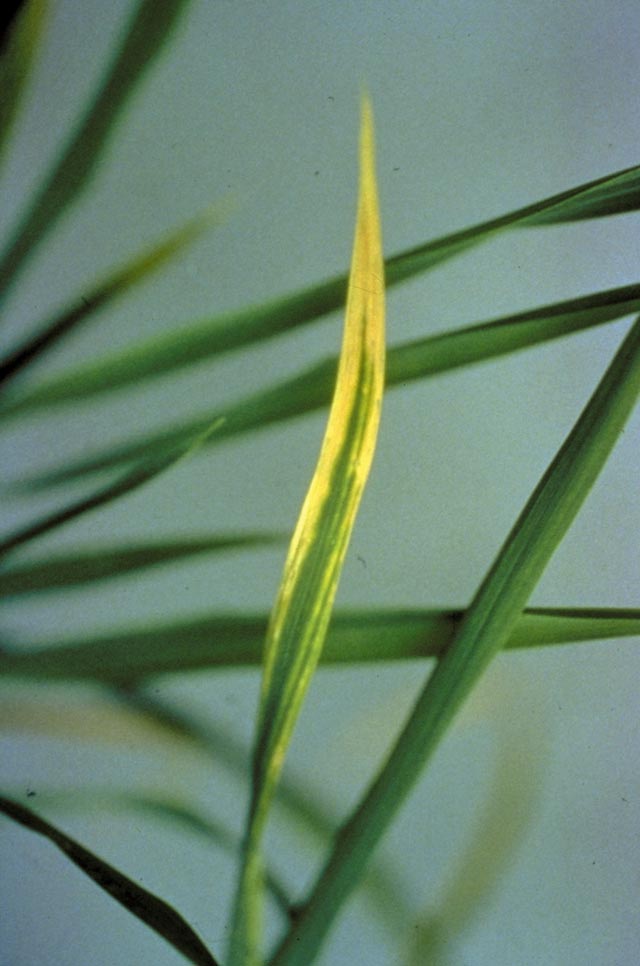Calcium (Ca) deficiency
 What it does
What it does
Calcium (Ca) deficiency impairs root function and predisposes plant to iron toxicity. It causes stunting and death of growing points.
Why and where it occurs
Ca deficiency is relatively rare especially in irrigated rice systems. It can be caused by one or more of the following:
- small amounts of available Ca in soil (degraded, acid, sandy soils)
- long-term irrigated rice cultivation
- excessive Nitrogen (N) or Potassium (K) fertilizer application
- excessive Phosphorus (P) fertilizer application, which may depress the availability of Ca (due to formation of Ca phosphates in alkaline soils).
Ca deficiency is very uncommon in lowland rice soils because there is usually sufficient Ca in the soil, from mineral fertilizers, and irrigation water.
The types of soil particularly prone to Ca deficiency are:
- acid, strongly leached, low-cation exchange capacity (CEC) soils in uplands and lowlands
- soils derived from serpentine rocks
- coarse-textured sandy soils with high percolation rates and leaching
- leached, old acid sulfate soils with low base content
How to identify
Signs and symptoms of Ca deficiency are visible only under severe conditions.
Check the plants for the following symptoms:
- tips of youngest leaves become white or bleached, rolled, and curled
- necrotic tissue may develop along the lateral margins of leaves and old leaves eventually turn brown and die
- stunting and death of growing point during extreme deficiency
To confirm Ca deficiency, bring soil and plant sample to a laboratory for testing.
Why is it important
Although rare in irrigated rice systems, the damage caused by Ca deficiency is important throughout the growth stage of the crop.
How to manage
- Apply farmyard manure or straw (incorporated or burned) to balance Ca removal.
- Where possible, use single superphosphate (13−20% Ca) or triple superphosphate (9−14% Ca) as a Ca source.







